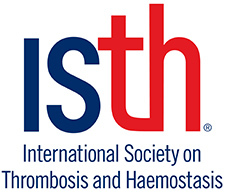New Scientific Review Confirms Blood Clots in Leg and Lungs (VTE) - No. 3 Cardiovascular Killer Globally - Is Leading Cause of Premature Death and Disability in Hospitals
-- World Thrombosis Day launches to bring awareness to largely preventable disease as comprehensive science review and public survey reveal large gap in public's knowledge
CHAPEL HILL, North Carolina, Oct. 10, 2014 /PRNewswire/ -- While the world's top two cardiovascular killers – heart attack and stroke – are global health priorities, the No. 3 killer, venous thromboembolism (VTE) or blood clots in the leg and lungs, has remained largely unaddressed and under-recognized by the public, according to the most comprehensive scientific review of the global burden of VTE ever undertaken and a global public survey. To address this disconnect, the International Society of Thrombosis and Haemostasis (ISTH) is leading a global effort together with more than 175 health/medical and patient organizations around the world to launch World Thrombosis Day (WTD), focused initially on increasing public and health professionals' awareness of potentially deadly blood clots in the leg and lungs, the risk factors, symptoms and the importance of prevention.
Logo - http://photos.prnewswire.com/prnh/20141006/150462
"The lack of attention over decades to this largely preventable disease amounts to an unrecognized crisis that we must start addressing immediately," said Gary Raskob, Ph.D., corresponding author of the scientific review, dean of the College of Public Health, University of Oklahoma Health Center and chairman of the WTD Steering Committee. "It is clear from our review that VTE is a major contributor to global disease burden. We must work together to increase awareness at all levels – personal, health care systems and providers, and ultimately policy makers – and to do a better job of prevention."
SCIENTIFIC REVIEW HIGHLIGHTS
Published in the Journal of Thrombosis and Haemostasis (JTH)[*] and four other leading thrombosis journals simultaneously worldwide, highlights from the review include:
- VTE is a major contributor to the global disease burden across high-, middle- and low-income regions, with overall incidence ranging from 0.75 to 2.7 cases per 1,000 people.
- VTE should be given higher priority in global disease surveillance and should be included in the World Health Organization (WHO) and World Bank's Global Burden of Disease, Injuries, and Risk Factors Study (GBD Study). The 2010 GBD Study documents the major impact of arterial thrombosis (blood clots in the arteries), the underlying cause of heart attacks and stroke, but does not include VTE as a specific cause of death and disability.
- VTE was the leading cause of premature death and disability among the causes of hospital-associated adverse events evaluated by the WHO patient safety program.[†]
- VTE prevention must be a global health priority, specifically the systematic and consistent use of proven, evidence-based preventive measures against VTE. This should be a priority for health-care providers and health systems as VTE is largely preventable. Simultaneously, the public must be made aware of the disease and how to prevent it – and they must be encouraged to be proactive about talking about it with their health care providers.
GLOBAL PUBLIC SURVEY HIGHLIGHTS
A survey conducted this summer among men and women in nine countries, conducted on behalf of ISTH by the global research firm Ipsos, found:
- Among adults, an average of only about 50 percent were aware of, or had ever heard of the term pulmonary embolism and 44 percent were aware of or had heard the term deep vein thrombosis.
- Only an average 1/4 of respondents were aware that hospital stays, surgery and cancer were the major risk factors for VTE.
- Only 28 percent of respondents said they would know what a blood clot in the leg would feel like. However, 35 percent of those individuals misidentified the signs of a blood clot. Only 19 percent said that they know what a blood clot in the lungs – a pulmonary embolism – would feel like.
- The majority of respondents were not aware that most blood clots can be prevented; 55 percent of individuals either were not aware that they can often be prevented or expressed no opinion about this question.
"Too few people know about blood clots in the leg and lungs and their life-threatening consequences – and too many people are dying a preventable death," said Raskob. "It is critical for people to: (1) Know the risk factors; (2) Be proactive – talk to your doctor about your risk and ask about preventing blood clots, especially if you are admitted to a hospital or are having surgery; and, (3) Know the symptoms and signs of a deep-vein thrombosis and of a pulmonary embolism and seek medical attention promptly if you experience them."
NEW PUBLIC EDUCATION RESOURCE
As part of the inaugural WTD launch, the ISTH has launched WorldThrombosisDay.org, a central informational resource to help the public understand the two types of blood clots that comprise VTE – those in the leg, called deep vein thrombosis (DVT), and those in the lungs, called pulmonary embolism (PE) – including an at-a-glance infographic and specific information about risk factors, signs/symptoms and key questions to ask health care providers, to FAQs, key terms to know, two public awareness videos and personal stories from patients and their families. The site also features resources and patient handouts for health professionals to help foster more dialogue between health care providers and the public.
[*] ISTH Steering Committee for World Thrombosis (2014). Thrombosis: A major contributor to global disease burden. J Thromb Haemost 2014; DOI: 10.1111/jth.12698; 12: 1580–1590.
[†] Jha AK, Larizgoitia I, Audera-Lopez C, Prasopa-Plaizier N, Waters H, Bates DW. The global burden of unsafe medical care: analytic modelling of observational studies. BMJ Qual Saf 2013; 22: 809−15.






Share this article